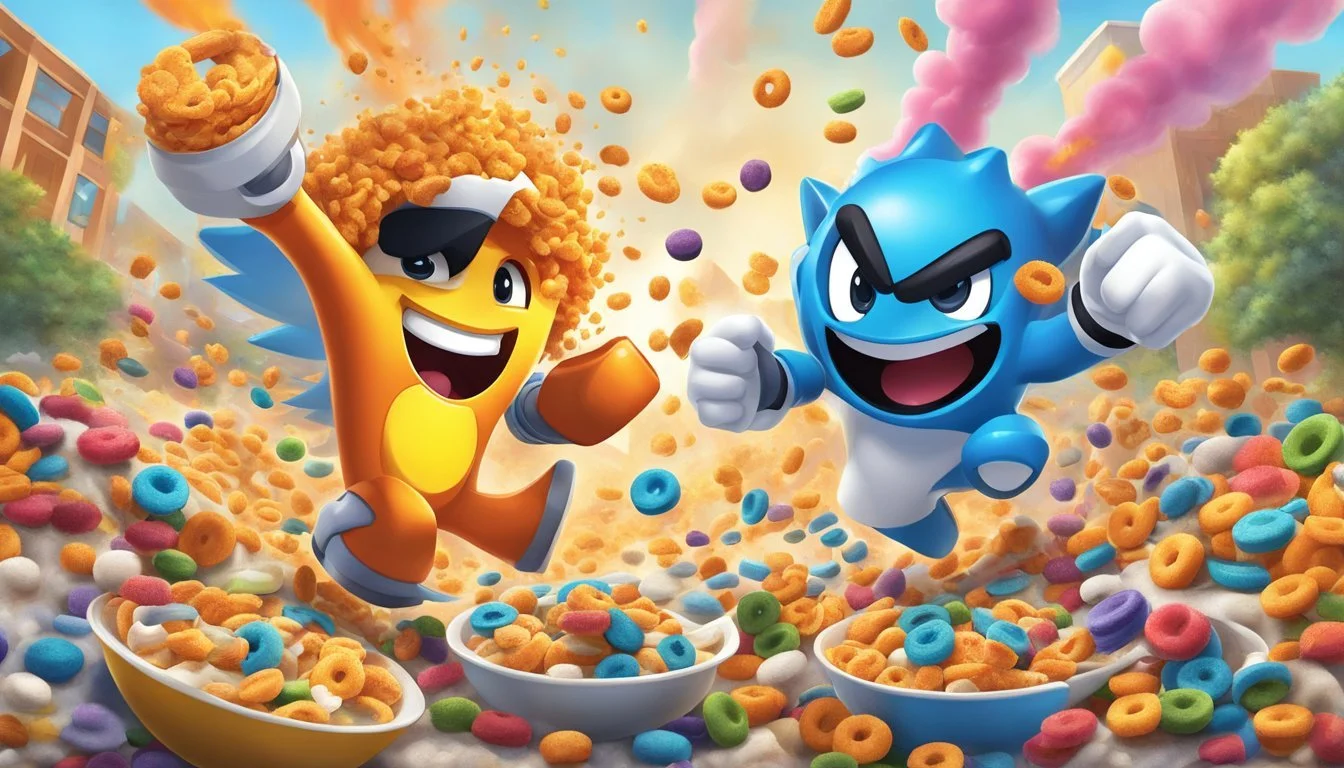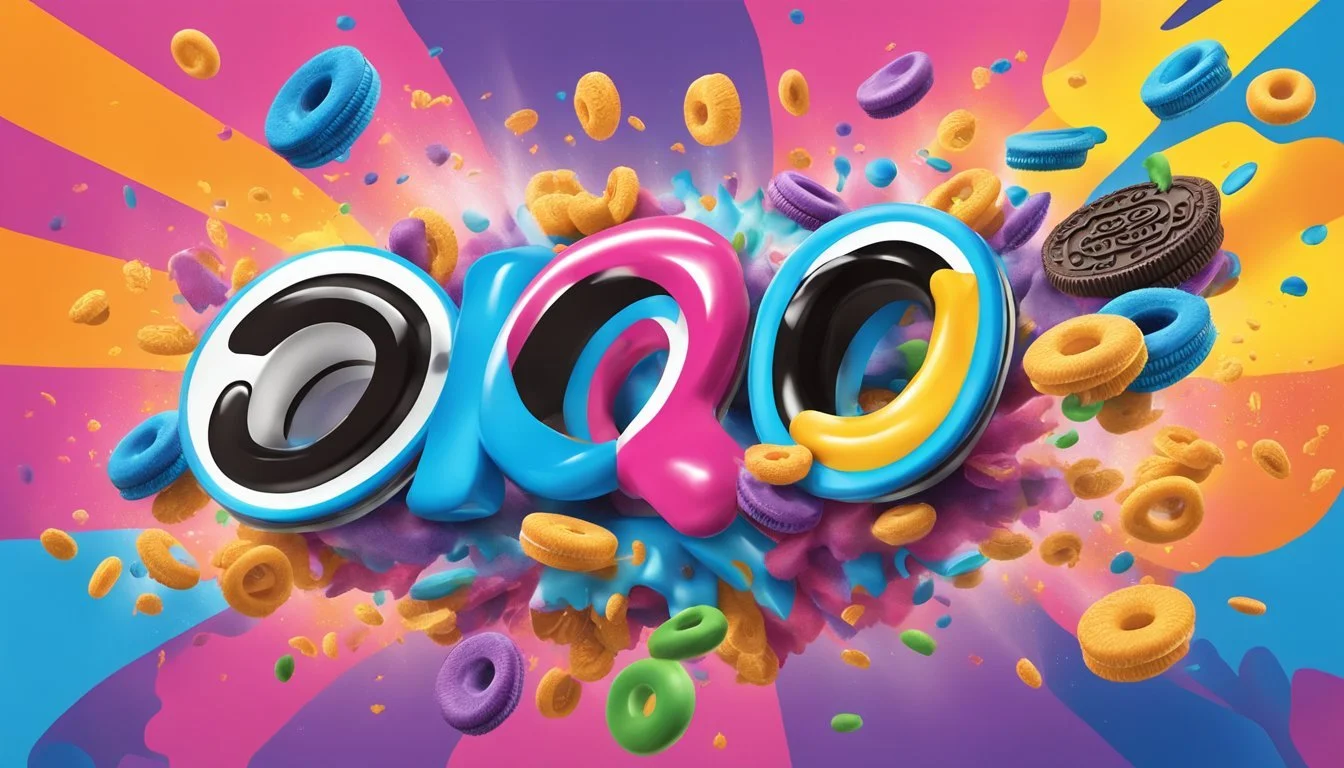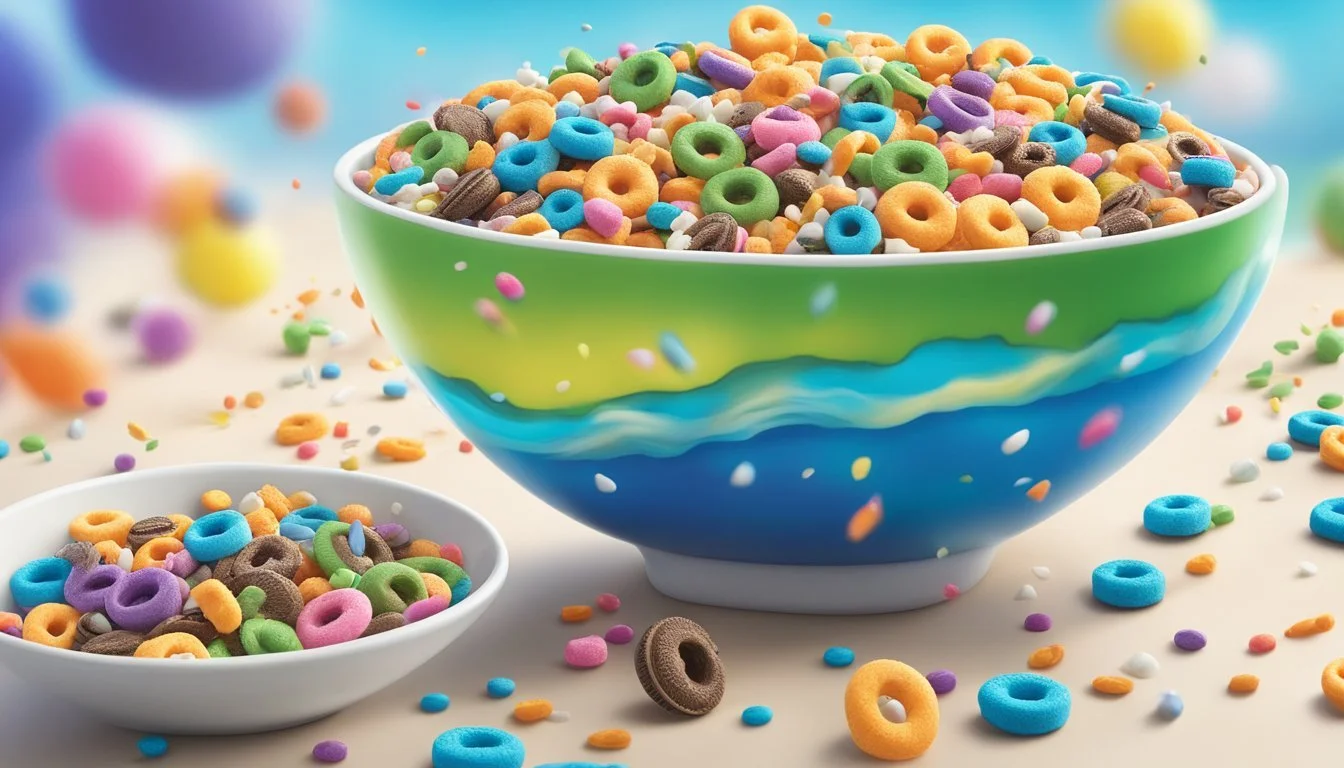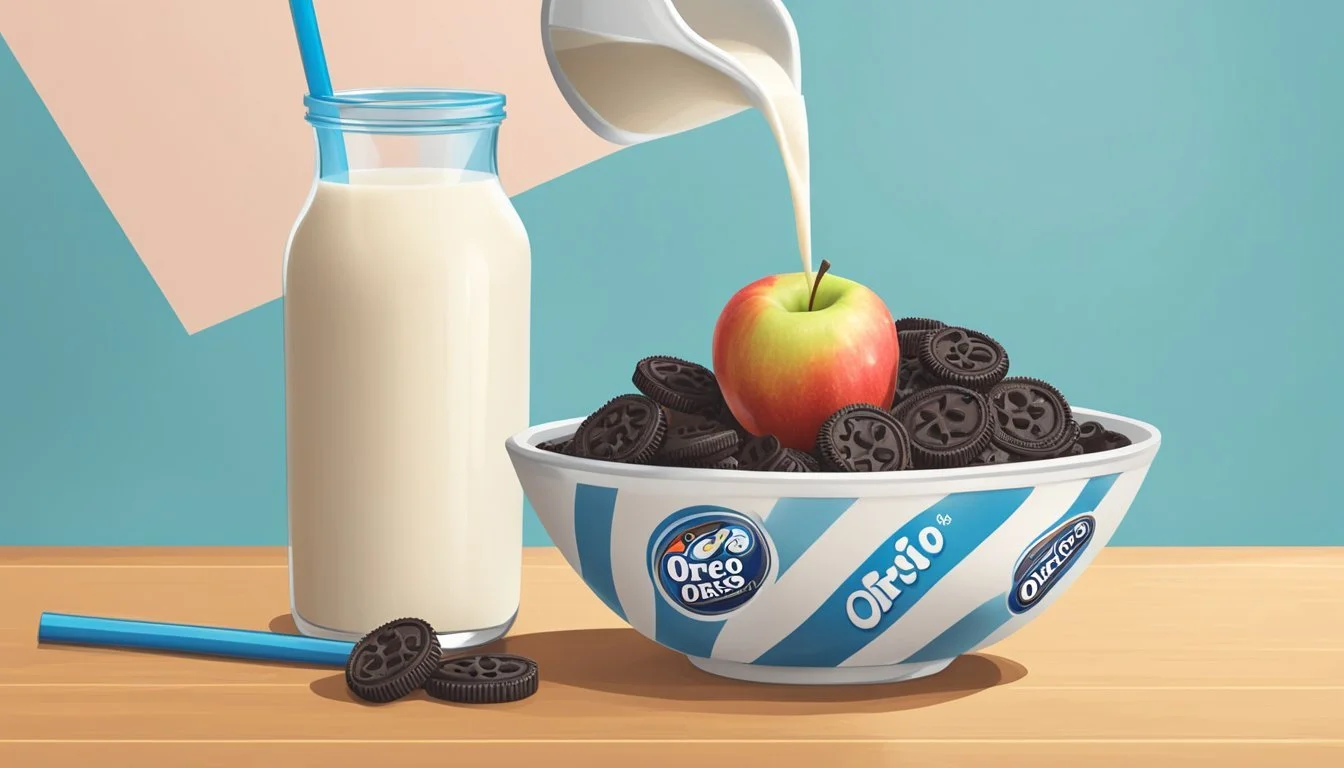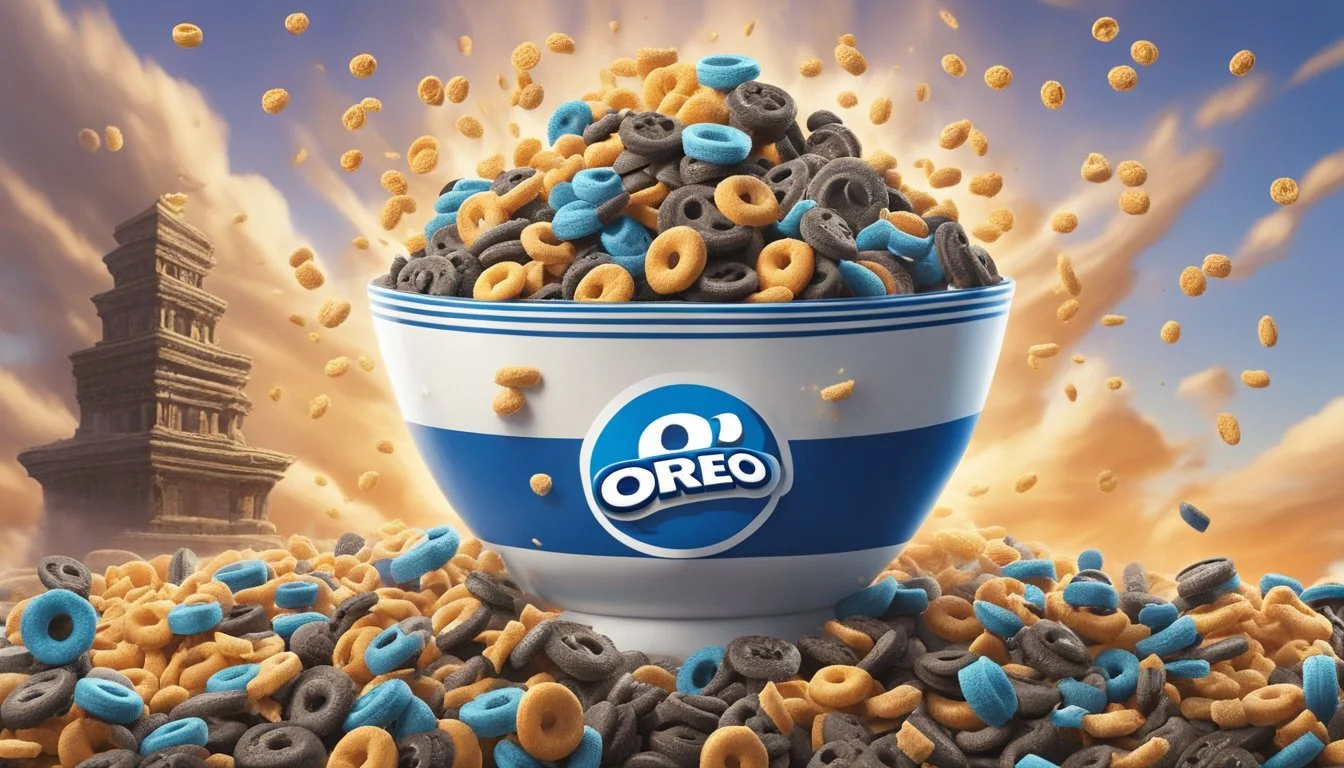Kaboom vs Oreo O's
A Comparative Analysis of Classic Cereals
This Article is Part of Our Breakfast Cereal Guide with Details on Kaboom Nutrition and Oreo O's Nutrition
Kaboom and Oreo O's, two iconic breakfast cereals, have each captured the hearts of cereal enthusiasts for their unique flavors and nostalgic appeal. Kaboom, a colorful cereal featuring clown faces and star shapes, offers a sugary start to the day, reminiscent of classic childhood breakfasts. In contrast, Oreo O's bring the beloved taste of Oreo cookies to the breakfast table with crunchy, chocolatey O-shaped pieces, enhanced by a creamy flavor.
Introduced by Post Cereals in the late 1990s, Oreo O's quickly became a popular pick for those who wanted their morning meal to taste like dessert. The cereal has undergone some changes over the years, including recipe adjustments and periods of discontinuation, but it always returns to satisfy its loyal fan base. Kaboom, meanwhile, holds a different kind of charm, with its bright appearance and sweet taste making it a favorite among those who long for a more traditional sugary cereal.
For anyone choosing between these two, it comes down to a matter of preference. Kaboom provides a burst of color and sweet flavor that feels like a carnival in a bowl, while Oreo O's deliver a rich, chocolate cookie experience perfect for any Oreo lover.
Historical Overview
Both Kaboom and Oreo O's cereals have rich histories that span multiple decades, filled with changes in production, market reception, and reintroduction efforts.
Origin and Development
Kaboom cereal was launched by General Mills in 1969. It featured brightly colored rings with marshmallow bits shaped like clowns, making it visually appealing to children. The cereal became known for its distinct flavors and vibrant colors.
Oreo O's, on the other hand, debuted in 1998. Created by Post Consumer Brands, it brought the beloved Oreo cookie flavor to the breakfast table with its O-shaped pieces. The concept was a hit, securing a strong fan base quickly.
Market Journey
Kaboom enjoyed popularity through the 1970s and 1980s. It stood out due to its unique marketing strategies and appeal to children's taste preferences. However, shifting market trends and competition eventually led to a decline in its market presence.
Oreo O's witnessed immediate success upon its introduction. As a unique cereal blending the taste of Oreos with milk, it gained a loyal following. Despite being discontinued in the U.S. market, it remained available in South Korea through an agreement with a local manufacturer.
Discontinuation and Comeback
Kaboom faced discontinuation in the mid-2000s. Changing consumer preferences and a shift towards healthier options influenced this decision. Despite efforts to maintain its presence, it ultimately left the shelves.
Oreo O's was discontinued in the United States in 2007 due to a split between Kraft Foods and Post Consumer Brands. However, persistent demand from fans led to its reintroduction in 2017. This comeback boosted sales, indicating the lasting appeal and market demand for nostalgic flavors.
Branding and Marketing
Kaboom and Oreo O's have distinct branding and marketing strategies that contribute to their unique positions in the cereal market. They leverage co-branding, strategic advertising, and global sales tactics to engage consumers.
Trademark and Co-branding Strategy
Kaboom, initially released by General Mills, features a distinctive clown mascot, aligning its image with fun and nostalgia. Oreo O's, on the other hand, were launched by Nabisco in collaboration with Post. This partnership capitalized on Oreo's brand recognition, combining the cookie's popularity with cereal.
Oreo O's have seen various joint ventures and relaunches, with recent manufacturing under Dongsuh Foods for the South Korean market. Copyrights and trademarks play crucial roles in maintaining brand identity for both cereals, ensuring consistency and protecting intellectual property.
Advertising Campaigns
Kaboom's advertising campaigns often highlight its colorful and fun image, targeting families and children through playful commercials and engaging packaging. The cereal's advertisements in the past have emphasized its unique shapes and vibrant colors, making it appealing to a younger audience.
Oreo O's have leveraged the iconic status of the Oreo cookie in their promotions. They utilize nostalgic themes while introducing new co-branding partnerships. Their campaigns often include innovative digital marketing strategies, social media engagement, and traditional TV commercials. The focus lies on the indulgent and familiar taste of Oreo cookies in a breakfast cereal form.
Global Sales Approach
Kaboom has had a fluctuating presence in the market, with periods of discontinuation and relaunches. Its imported versions maintain brand essence, but its global reach remains limited compared to Oreo O's.
Oreo O's have a more extensive global sales strategy, benefiting from Nabisco's and Post's distribution networks. In South Korea, a joint venture with Dongsuh Foods has allowed the cereal to thrive. This international approach ensures Oreo O's remain a staple in breakfast aisles worldwide, adapting to regional tastes and preferences.
Oreo O's consistency in marketing and distribution, paired with strategic partnerships, positions it as a globally recognized brand. Kaboom's distinct identity, tied to its nostalgic appeal, gives it a unique charm, though its global impact remains more limited.
Product Variations
Both Kaboom and Oreo O's have evolved over the years with changes in original flavors and the introduction of new variations to appeal to different tastes. Each brand has its own unique approach to expanding their product lines.
Original Flavors and Formulations
Oreo O's was introduced in 1997 by Post Cereals and originally featured O-shaped pieces with an Oreo cookie flavor and a rich creme coating. The cereal was known for its distinctive cookies and cream taste. In 2001, a new recipe included real creme filling, enhancing the cereal's flavor.
Kaboom, a former cereal by General Mills, had colorful clown-shaped pieces. Each piece had a different fruity flavor, creating a vibrant mix in every bowl. The cereal also included marshmallow bits, adding extra sweetness and texture. It was marketed primarily towards children with its playful design and sweet taste profile.
Extensions and Spin-offs
Oreo O's saw various extensions over time. One notable variation was the Extreme Creme Taste Oreo O's, which had an intensified amount of creme filling to heighten the flavor. After its initial discontinuation in the mid-2000s in the U.S., it was later revived with a modified formula, and a version produced by Malt-O-Meal became available.
Kaboom did not see as many spin-offs or extensions as Oreo O's. The brand remained relatively consistent in its offering, focusing on its original fruity and marshmallow-filled formulation. Unlike Oreo O's, Kaboom did not pursue significant recipe changes or extensions before it was discontinued.
Consumer Experience
When comparing Kaboom and Oreo O's, it is essential to examine their taste profiles, nutritional values, and nostalgic appeal to understand their impact on consumers fully.
Taste Profile
Kaboom offers a fruity flavor with marshmallow bits, appealing to those who enjoy a tangy and sweet breakfast cereal. The crunchy texture pairs well with milk, balancing the tartness with creamy notes.
Oreo O's, on the other hand, emulate the flavor of Oreo cookies, combining a rich chocolate taste with hints of cream. This cereal is often less chocolatey than expected but has a closer taste to cookies and cream. Consumers enjoy the satisfying crunch that softens slightly in milk, offering a pleasant contrast.
Nutritional Value
Regarding Kaboom, the cereal tends to be higher in sugar, which might not be ideal for those watching their sugar intake. It often fortified with vitamins and minerals, making it an appealing choice for children’s breakfast.
Oreo O's might also contain a significant amount of sugar, reflecting its dessert-like flavor profile. The cereal can be fortified with essential nutrients, but the sweetness might deter health-conscious consumers. Both cereals serve as occasional treats instead of daily breakfast staples due to their sugar levels.
Nostalgia and Consumer Sentiment
Kaboom carries a nostalgic appeal largely for individuals who grew up eating it during its initial launch period. The colorful cereal and marshmallow bits invoke memories of childhood breakfast times, impacting consumer sentiment positively. Many consumers fondly recall it as part of their morning routine.
Oreo O's have their own nostalgic charm, especially among those who enjoyed them during the late 1990s and early 2000s. The cereal’s return to grocery shelves sparked excitement among fans eager to revisit their childhood favorites. Consumers often review it favorably, stating it brings back memories of eating cookies for breakfast.
Both cereals invoke strong sentimental reflections, indicating their lasting legacy in consumer culture.
Health and Dietary Considerations
Consumers often want to balance taste with healthy choices, especially when it comes to breakfast cereals like Kaboom and Oreo O’s. Understanding the ingredients and potential allergens in each can help inform smarter dietary decisions.
Ingredient Breakdown
Kaboom contains a variety of ingredients including fortified wheat flour, sugar, corn syrup, and various vitamins like iron, thiamin, and niacin. These vitamins can offer some nutritional benefits, but the high sugar content should be noted. Kaboom also includes BHT (Butylated Hydroxytoluene) as a preservative, which has been debated for its safety in large quantities.
Oreo O’s feature ingredients such as wheat flour, sugar, cocoa, and high fructose corn syrup. Similar to Kaboom, Oreo O’s are fortified with vitamins and minerals, including iron and niacin. Yet, the high sugar content and the inclusion of high fructose corn syrup are concerning for those monitoring their sugar intake.
Both cereals, while offering some vitamins, are primarily made up of sugars and refined grains, making them less ideal for those seeking a balanced meal.
Allergy and Safety Information
Kaboom may contain allergens like wheat and can possibly include traces of soy and dairy due to cross-contamination in manufacturing facilities. Potential safety concerns include the presence of BHT and the possibility of E. Coli contamination, although this is rare.
Oreo O’s also pose allergy risks primarily due to wheat. The use of high fructose corn syrup could be a concern for individuals sensitive to this ingredient. Another safety aspect to consider is the risk of E. Coli, particularly in cereals that are improperly stored or handled.
In summary, awareness of these ingredients and allergens can help consumers make informed choices about which cereal might be better suited to their health needs.
Distribution and Availability
Kaboom and Oreo O's cereal have unique distribution strategies. Both brands leverage retail partnerships and online purchase options to ensure widespread availability, emphasizing major retailers and e-commerce platforms.
Retail Partnerships
Kaboom cereal can often be spotted in major supermarket chains and grocery stores across the United States. Walmart is a key partner, frequently stocking Kaboom in their cereal aisles. Regionally, stores in New Jersey also carry it, ensuring local availability for residents.
Oreo O's have a similar retail presence. They are stocked in popular locations like Walmart, as well as other prominent retailers. Notably, Oreo O's made a significant return to U.S. shelves after previously being available mainly in South Korea.
Online Purchase Options
Kaboom and Oreo O's are both available for purchase online, catering to a broader audience. Platforms like Walmart's online store offer nationwide shipping for Kaboom, making it accessible to customers who may not find it in local stores.
Oreo O's also benefit from a strong online presence. They can be bought from various e-commerce sites including Amazon and Walmart's online service. This ensures convenience for customers preferring online shopping over visiting physical stores.
Cultural Impact
Kaboom and Oreo O's not only evoke strong nostalgic feelings but also foster deep connections with their respective consumer bases. These cereals have carved out unique spots in pop culture and cultivate dedicated communities around their brands.
Pop Culture References
Oreo O's, produced by General Mills, has made significant appearances in various forms of media. Known for its dessert-like, cookies-and-cream flavor, it has been featured in lists by Delish and other food blogs. Despite its discontinuation in the mid-2000s, consumer demand led to its revival, highlighting its lasting impact.
Kaboom, with its colorful marshmallow shapes, appeals largely to those with a fondness for childhood memories. It is often mentioned in discussions of vintage snacks and cereals, especially popular in the 1970s and 1980s. Its whimsical nature has made it a symbol of nostalgic breakfast culture.
Consumer Loyalty and Community
Both Kaboom and Oreo O's enjoy dedicated followings, with communities actively sharing their love for these cereals online. For Oreo O's, this loyalty is particularly strong among millennials who recall it fondly from their youth. Social media and forums often feature posts celebrating its return.
Kaboom rallies a loyal fan base as well, particularly in regions like Michigan, where consumers cherish it as part of their childhood. Collectors and enthusiasts of retro snacks often seek out rare boxes or memorabilia, highlighting a strong sense of community around the cereal's legacy.
These devoted communities ensure that the legacy of both cereals endures, characterized by deep appreciation and ongoing engagement.
Conclusion
Contrasting Kaboom and Oreo O's reveals a diverse cereal landscape catering to different tastes and nostalgia. Kaboom offers a colorful and playful experience loved by children in the '70s and '80s. Oreo O's, reintroduced in 2017, has capitalized on modern nostalgia for '90s and early 2000s cereals.
Market analysis suggests both brands appeal to distinct segments. Kaboom targets those who cherish vibrant, marshmallow-packed cereals, while Oreo O's attract cookie enthusiasts and those seeking a sweet breakfast treat.
Consumer insights indicate a persistent affection for both cereals. Parents reminisce over Kaboom's fun shapes and fruity flavors. Oreo O's delight those who appreciate the classic cookie's taste in a convenient cereal form.
In terms of nutritional content, Kaboom typically featured marshmallows and a sugar-rich profile. Oreo O's heavily lean on their dessert-like quality, combining chocolatey notes with a hint of creamy flavor, albeit with a significant sugar content.
Popular sentiment leans toward a nostalgic embrace of both cereals. While Kaboom's character-driven marketing and vibrant presentation evoke childhood memories, Oreo O's provide a fusion of beloved snack and breakfast fusion.
Their reintroduction to the market highlights the importance of nostalgic branding. Oreo O's reentered with collaboration between Post and Mondelēz International, showing the value placed on beloved brands' return.
In essence, Kaboom and Oreo O's embody different slices of cereal history, each with its unique charm and enduring appeal.


